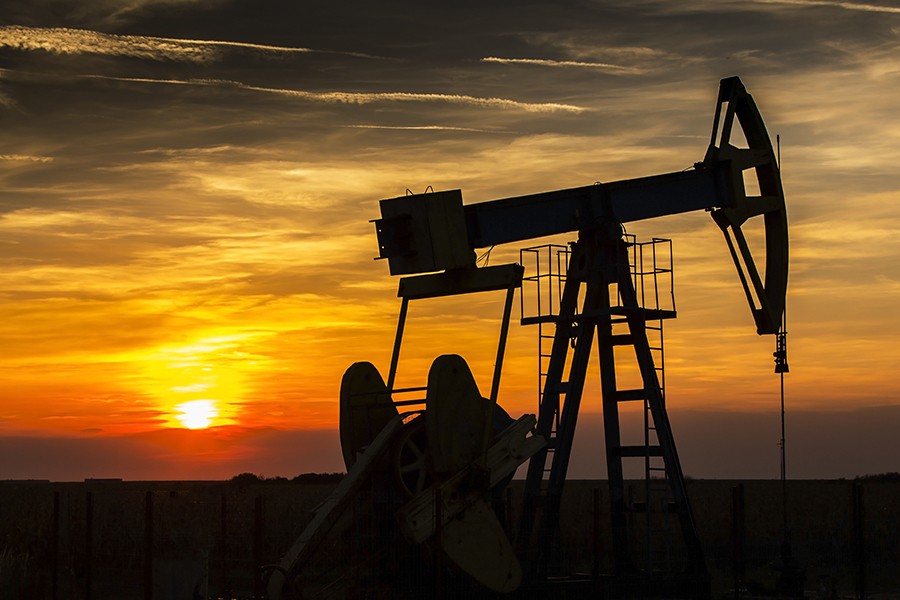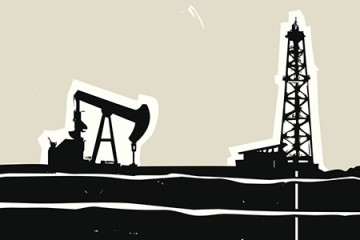People with asthma who live near bigger or larger numbers of active unconventional natural gas wells operated by the fracking industry in Pennsylvania are 1.5 to four times likelier to have asthma attacks than those who live farther away, new research from the Johns Hopkins Bloomberg School of Public Health suggests.
The findings, published today in JAMA Internal Medicine, add to a growing body of evidence tying the fracking industry to health concerns. Health officials have been concerned about the effect of this type of drilling on air and water quality, as well as the stress of living near a well.
Simply developing a well site can require more than 1,000 truck trips on once-quiet roads. The fracking industry has developed more than 9,000 wells in Pennsylvania in the past decade.
"Ours is the first to look at asthma, but we now have several studies suggesting adverse health outcomes related to the drilling of unconventional natural gas wells," says study leader Sara G. Rasmussen, a PhD candidate in the Bloomberg School's Department of Environmental Health Sciences. "Going forward, we need to focus on the exact reasons why these things are happening, because if we know why, we can help make the industry safer."
For the study, Rasmussen and her colleagues analyzed health records from 2005 through 2012 from the Geisinger Health System, a health care provider that covers 40 counties in north and central Pennsylvania. The study is a joint effort of the Bloomberg School and the Geisinger Health System. Johns Hopkins researchers identified more than 35,000 asthma patients between ages 5 and 90. They identified 20,749 mild attacks (requiring a corticosteroid prescription), 1,870 moderate ones (requiring an emergency room visit) and 4,782 severe attacks (requiring hospitalization). They mapped where the patients with these attacks lived; assigned them metrics based on the location, size, number, phase, total depth, and gas production of the wells; and compared them to asthma patients who didn't have attacks in the same year.
Those who lived closer to a large number or bigger active natural gas wells were significantly more likely—1.5 to four times more likely—to suffer asthma attacks. And while these asthma attacks were likely to occur more frequently around wells throughout the four phases of the development process, the researchers found that the increased risk was greater during the production phase, which can last many years. The findings held up even when accounting for other factors that can exacerbate asthma, including proximity to major roads, family history, smoking, socioeconomics, and more.
The new study can't pinpoint why asthma attacks are more likely closer to more or larger wells, though researchers say that air pollution and increased stress levels from the noise, traffic, and other community impacts associated with the industry could play a role. In previous research, stress has been implicated in substantially increasing the risk of asthma attacks.
Previous research has linked the fracking industry, for example, to an increase in such adverse reproductive outcomes as preterm births and lower birth weights, and also to a variety of symptoms such as those involving the skin or upper respiratory tract. The researchers say that drilling and production of wells has become safer and cleaner in the past years, something that would not be captured in this study.
"We are concerned with the growing number of studies that have observed health effects associated with this industry," says the study's senior author, Brian S. Schwartz, a professor in the Department of Environmental Health Sciences at the Bloomberg School. "We believe it is time to take a more cautious approach to well development with an eye on environmental and public health impacts."
The well development process has several environmental and community impacts. When the well pads are created, diesel equipment is used to clear acres of land, transport equipment and drill the wells themselves. Drilling down thousands of feet and then horizontally many more thousands of feet requires heavy equipment to break up the shale where the gas sits. Hydraulic fracturing, or fracking, then involves injecting millions of liters of water mixed with chemicals and sand to fracture the shale. The fluids are then pumped back to the surface. The gas itself also releases pollutants and leaks can be common. Noise, light, vibration, and truck traffic can be observed near wells, contributing to sleep problems and potentially decreasing home values, both of which could contribute to stress.
Energy companies started producing natural gas using fracking when gas prices were high and supplies were low. While New York State has banned fracking altogether and there is a moratorium on it in Maryland, Pennsylvania has embraced the industry. Hydraulic fracturing has expanded rapidly in recent years in the western half of the country in states such as Colorado, North Dakota, and Wyoming. In the East, West Virginia and Ohio also allow it.
Maryland's moratorium is set to expire in October 2017. The moratorium was passed in 2015 out of concern about fracking's potentially negative environmental effects but without benefit of the more recent scientific evidence. Schwartz says Maryland regulators should consider these new findings when they decide whether or how to allow drilling.
"Going forward, everyone can learn from Pennsylvania's experience," he says. "State regulatory bodies should use the growing number of health studies to understand the possible environmental and public health impacts of this industry and how to minimize them."
Posted in Health, Politics+Society
Tagged asthma, environmental health, fracking









